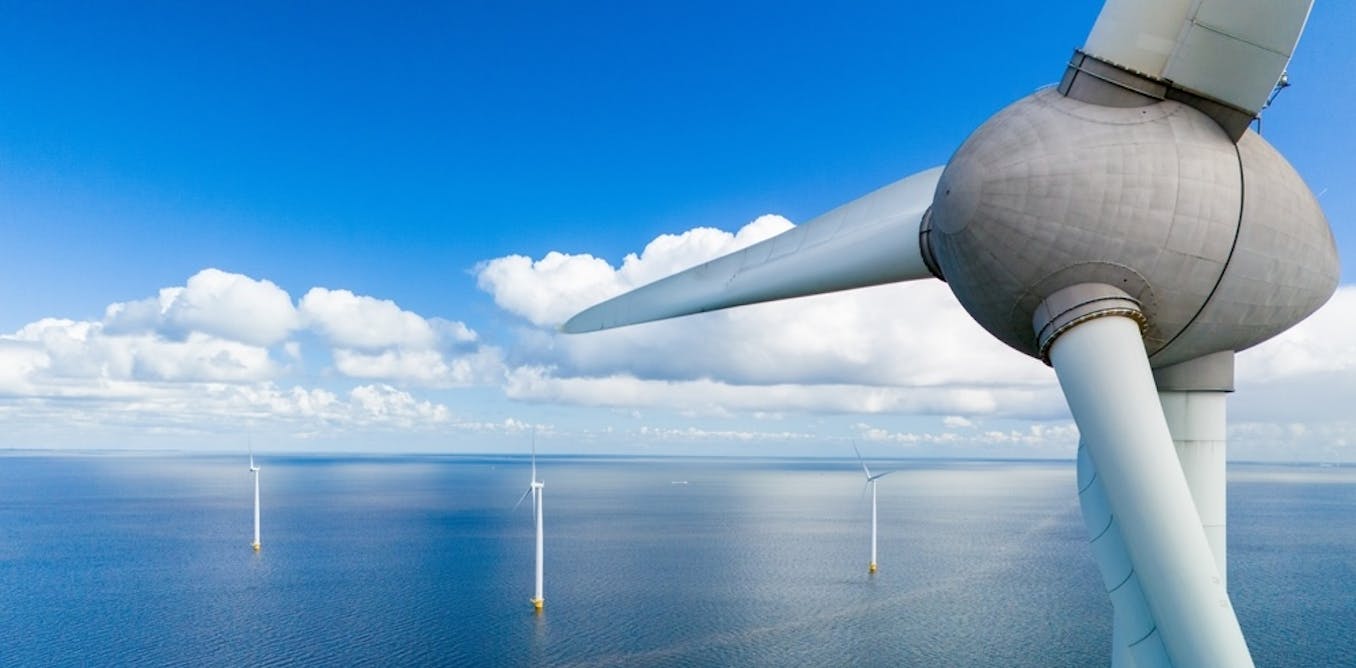Against all odds, Ukraine is still standing almost two and a half years after Russia’s massive 2022 invasion. Of course, hundreds of billions of dollars in Western support as well as Russian errors have helped immensely, but it would be a mistake to overlook Ukraine’s creative use of new technologies, particularly drones. While uncrewed aerial vehicles have grabbed most of the attention, it is naval drones that could be the key to bringing Russian president Vladimir Putin to the negotiating table.
These naval-drone operations in the Black Sea against Russian warships and other targets have been so successful that they are prompting, in London, Paris, Washington, and elsewhere, fundamental reevaluations of how drones will affect future naval operations. In August, 2023, for example, the Pentagon launched the billion-dollar
Replicator initiative to field air and naval drones (also called sea drones) on a massive scale. It’s widely believed that such drones could be used to help counter a Chinese invasion of Taiwan.
And yet Ukraine’s naval drones initiative grew out of necessity, not grand strategy. Early in the war, Russia’s Black Sea fleet launched cruise missiles into Ukraine and blockaded Odesa, effectively shutting down Ukraine’s exports of grain, metals, and manufactured goods. The missile strikes terrorized Ukrainian citizens and shut down the power grid, but Russia’s blockade was arguably more consequential, devastating Ukraine’s economy and creating food shortages from North Africa to the Middle East.
With its navy seized or sunk during the war’s opening days, Ukraine had few options to regain access to the sea. So Kyiv’s troops got creative.
Lukashevich Ivan Volodymyrovych, a brigadier general in the Security Service of Ukraine, the country’s counterintelligence agency, proposed building a series of fast, uncrewed attack boats. In the summer of 2022, the service, which is known by the acronym SBU, began with a few prototype drones. These quickly led to a pair of naval drones that, when used with commercial satellite imagery, off-the-shelf uncrewed aircraft, and Starlink terminals, gave Ukrainian operators the means to sink or disable a third of Russia’s Black Sea Fleet, including the flagship Moskva and most of the fleet’s cruise-missile-equipped warships.
To protect their remaining vessels, Russian commanders relocated the Black Sea Fleet to Novorossiysk, 300 kilometers east of Crimea. This move sheltered the ships from Ukrainian drones and missiles, but it also put them too far away to threaten Ukrainian shipping or defend the Crimean Peninsula. Kyiv has exploited the opening by restoring trade routes and mounting sustained airborne and naval drone strikes against Russian bases on Crimea and the Kerch Strait Bridge connecting the peninsula with Russia.
How Maguras and Sea Babies Hunt and Attack
The first Ukrainian drone boats were cobbled together with parts from jet skis, motorboats, and off-the-shelf electronics. But within months, manufacturers working for the Ukraine defense ministry and SBU fielded several designs that proved their worth in combat, most notably the
Magura V5 and the Sea Baby.
Carrying a 300-kilogram warhead, on par with that of a heavyweight
torpedo, the Magura V5 is a hunter-killer antiship drone designed to work in swarms that confuse and overwhelm a ship’s defenses. Equipped with Starlink terminals, which connect to SpaceX’s Starlink satellites, and GPS, a group of about three to five Maguras likely moves autonomously to a location near the potential target. From there, operators can wait until conditions are right and then attack the target from multiple angles using remote control and video feeds from the vehicles.
A Ukrainian Magura V5 hunter-killer sea drone was demonstrated at an undisclosed location in Ukraine on 13 April 2024. The domed pod toward the bow, which can rotate from side to side, contains a thermal camera used for guidance and targeting.Valentyn Origrenko/Reuters/Redux
Larger than a Magura, the Sea Baby is a multipurpose vehicle that can carry about 800 kg of explosives, which is close to twice the payload of a Tomahawk cruise missile. A Sea Baby was used in 2023 to inflict substantial damage to the Kerch Strait Bridge. A more recent version carries a rocket launcher that Ukraine troops plan to use against Russian forces along the Dnipro River, which flows through eastern Ukraine and has often formed the frontline in that part of the country. Like a Magura, a Sea Baby is likely remotely controlled using Starlink and GPS. In addition to attack, it’s also equipped for surveillance and logistics.
Russia reduced the threat to its ships by moving them out of the region, but fixed targets like the Kerch Strait Bridge remain vulnerable to Ukrainian sea drones. To try to protect these structures from drone onslaughts, Russian commanders are taking a “kitchen sink” approach, submerging hulks around bridge supports, fielding more guns to shoot at incoming uncrewed vessels, and jamming GPS and Starlink around the Kerch Strait.

Ukrainian service members demonstrated the portable, ruggedized consoles used to remotely guide the Magura V5 naval drones in April 2024.Valentyn Origrenko/Reuters/Redux
While the war remains largely stalemated in the country’s north, Ukraine’s naval drones could yet force Russia into negotiations. The Crimean Peninsula was Moscow’s biggest prize from its decade-long assault on Ukraine. If the Kerch Bridge is severed and the Black Sea Fleet pushed back into Russian ports, Putin may need to end the fighting to regain control over Crimea.
Why the U.S. Navy Embraced the Swarm
Ukraine’s small, low-cost sea drones are offering a compelling view of future tactics and capabilities. But recent experiences elsewhere in the world are highlighting the limitations of drones for some crucial tasks. For example, for protecting shipping from piracy or stopping trafficking and illegal fishing, drones are less useful.
Before the Ukraine war, efforts by the U.S. Department of Defense to field surface sea drones focused mostly on large vehicles. In 2015, the Defense Advanced Research Projects Agency started, and the U.S. Navy later continued, a project that built
two uncrewed surface vessels, called Sea Hunter and Sea Hawk. These were 130-tonne sea drones capable of roaming the oceans for up to 70 days while carrying payloads of thousands of pounds each. The point was to demonstrate the ability to detect, follow, and destroy submarines. The Navy and the Pentagon’s secretive Strategic Capabilities Office followed with the Ghost Fleet Overlord uncrewed vessel programs, which produced four larger prototypes designed to carry shipping-container-size payloads of missiles, sensors, or electronic countermeasures.
The U.S. Navy’s newly created Uncrewed Surface Vessel Division 1 (
USVDIV-1) completed a deployment across the Pacific Ocean last year with four medium and large sea drones: Sea Hunter and Sea Hawk and two Overlord vessels, Ranger and Mariner. The five-month deployment from Port Hueneme, Calif., took the vessels to Hawaii, Japan, and Australia, where they joined in annual exercises conducted by U.S. and allied navies. The U.S. Navy continues to assess its drone fleet through sea trials lasting from several days to a few months.

The Sea Hawk is a U.S. Navy trimaran drone vessel designed to find, pursue, and attack submarines. The 130-tonne ship, photographed here in October of 2023 in Sydney Harbor, was built to operate autonomously on missions of up to 70 days, but it can also accommodate human observers on board. Ensign Pierson Hawkins/U.S. Navy
In contrast with Ukraine’s small sea drones, which are usually remotely controlled and operate outside shipping lanes, the U.S. Navy’s much larger uncrewed vessels have to follow the nautical rules of the road. To navigate autonomously, these big ships rely on robust onboard sensors, processing for computer vision and target-motion analysis, and automation based on predictable forms of artificial intelligence, such as expert- or agent-based algorithms rather than deep learning.
But thanks to the success of the Ukrainian drones, the focus and energy in sea drones are rapidly moving to the smaller end of the scale. The U.S. Navy initially envisioned platforms like
Sea Hunter conducting missions in submarine tracking, electronic deception, or clandestine surveillance far out at sea. And large drones will still be needed for such missions. However, with the right tactics and support, a group of small sea drones can conduct similar missions as well as other vital tasks.
For example, though they are constrained in speed, maneuverability, and power generation, solar- or sail-powered drones can stay out for months with little human intervention. The earliest of these are wave gliders like the Liquid Robotics (a Boeing company)
SHARC, which has been conducting undersea and surface surveillance for the U.S. Navy for more than a decade. Newer designs like the Saildrone Voyager and Ocius Blue Bottle incorporate motors and additional solar or diesel power to haul payloads such as radars, jammers, decoys, or active sonars. The Ocean Aero Triton takes this model one step further: It can submerge, to conduct clandestine surveillance or a surprise attack, or to avoid detection.

The Triton, from Ocean Aero in Gulfport, Miss., is billed as the world’s only autonomous sea drone capable of both cruising underwater and sailing on the surface. Ocean Aero
Ukraine’s success in the Black Sea has also unleashed a flurry of new small antiship attack drones. USVDIV-1 will use the
GARC from Maritime Applied Physics Corp. to develop tactics. The Pentagon’s Defense Innovation Unit also began purchasing drones for the China-focused Replicator initiative, which includes fast-attack sea drones from Austin, Texas–based Saronic.
Behind the soaring interest in small and inexpensive sea drones is the
changing value proposition for naval drones. As recently as four years ago, military planners were focused on using them to replace crewed ships in “dull, dirty, and dangerous” jobs. But now, the thinking goes, sea drones can provide scale, adaptability, and resilience across each link in the “kill chain” that extends from detecting a target to hitting it with a weapon.
Today, to attack a ship, most navies generally have one preferred sensor (such as a radar system), one launcher, and one missile. But what these planners are now coming to appreciate is that a fleet of crewed surface ships with a collection of a dozen or two naval drones would offer multiple paths to both find that ship and attack it. These craft would also be less vulnerable, because of their dispersion.
Defending Taiwan by Surrounding It With a “Hellscape”
U.S. efforts to protect Taiwan may soon reflect this new value proposition. Many
classified and unclassified war games suggest Taiwan and its allies could successfully defend the island—but at costs high enough to potentially dissuade a U.S. president from intervening on Taiwan’s behalf. With U.S. defense budgets capped by law and procurement constrained by rising personnel and maintenance costs, substantially growing or improving today’s U.S. military for this specific purpose is unrealistic. Instead, commanders are looking for creative solutions to slow or stop a Chinese invasion without losing most U.S. forces in the process.
Naval drones look like a good—and maybe the best—
solution. The Taiwan Strait is only 160 kilometers (100 miles) wide, and Taiwan’s coastline offers only a few areas where large numbers of troops could come ashore. U.S. naval attack drones positioned on the likely routes could disrupt or possibly even halt a Chinese invasion, much as Ukrainian sea drones have denied Russia access to the western Black Sea and, for that matter, Houthi-controlled drones have sporadically closed off large parts of the Red Sea in the Middle East.
Rather than killer robots seeking out and destroying targets, the drones defending Taiwan would be passively waiting for Chinese forces to illegally enter a protected zone, within which they could be attacked.
The new U.S. Indo-Pacific Command leader, Admiral
Sam Paparo, wants to apply this approach to defending Taiwan in a scenario he calls “Hellscape.” In it, U.S. surface and undersea drones would likely be based near Taiwan, perhaps in the Philippines or Japan. When the potential for an invasion rises, the drones would move themselves or be carried by larger uncrewed or crewed ships to the western coast of Taiwan to wait.
Sea drones are well-suited to this role, thanks in part to the evolution of naval technologies and tactics over the past half century. Until World War II, submarines were the most lethal threat to ships. But since the Cold War, long-range subsonic, supersonic, and now hypersonic antiship missiles have commanded navy leaders’ attention. They’ve spent decades devising ways to protect their ships against such antiship missiles.
Much less effort has gone into defending against torpedoes, mines—or sea drones. A dozen or more missiles might be needed to ensure that just one reaches a targeted ship, and even then, the
damage may not be catastrophic. But a single surface or undersea drone could easily evade detection and explode at a ship’s waterline to sink it, because in this case, water pressure does most of the work.
The level of autonomy available in most sea drones today is more than enough to attack ships in the Taiwan Strait. Details of U.S. military plans are classified, but a recent Hudson Institute
report that I wrote with Dan Patt, proposes a possible approach. In it, a drone flotilla, consisting of about three dozen hunter-killer surface drones, two dozen uncrewed surface vessels carrying aerial drones, and three dozen autonomous undersea drones, would take up designated positions in a “kill box” adjacent to one of Taiwan’s western beaches if a Chinese invasion fleet had begun massing on the opposite side of the strait. Even if they were based in Japan or the Philippines, the drones could reach Taiwan within a day. Upon receiving a signal from operators remotely using Starlink or locally using a line-of-sight radio, the drones would act as a mobile minefield, attacking troop transports and their escorts inside Taiwan’s territorial waters. Widely available electro-optical and infrared sensors, coupled to recognition algorithms, would direct the drones to targets.
Although communications with operators onshore would likely be jammed, the drones could coordinate their actions locally using line-of-sight Internet Protocol–based networks like
Silvus or TTNT. For example, surface vessels could launch aerial drones that would attack the pilot houses and radars of ships, while surface and undersea drones strike ships at the waterline. The drones could also coordinate to ensure they do not all strike the same target and to prioritize the largest targets first. These kinds of simple collaborations are routine in today’s drones.
Treating drones like mines reduces the complexity needed in their control systems and helps them comply with Pentagon
rules for autonomous weapons. Rather than killer robots seeking out and destroying targets, the drones defending Taiwan would be passively waiting for Chinese forces to illegally enter a protected zone, within which they could be attacked.
Like Russia’s Black Sea Fleet, the Chinese navy will develop countermeasures to sea drones, such as employing decoy ships, attacking drones from the air, or using minesweepers to move them away from the invasion fleet. To stay ahead, operators will need to continue innovating tactics and behaviors through frequent exercises and experiments, like those
underway at U.S. Navy Unmanned Surface Vessel Squadron Three. (Like the USVDIV-1, it is a unit under the U.S. Navy’s Surface Development Squadron One.) Lessons from such exercises would be incorporated into the defending drones as part of their programming before a mission.
The emergence of sea drones heralds a new era in naval warfare. After decades of focusing on increasingly lethal antiship missiles, navies now have to defend against capable and widely proliferating threats on, above, and below the water. And while sea drone swarms may be mainly a concern for coastal areas, these choke points are critical to the global economy and most nations’ security. For U.S. and allied fleets, especially, naval drones are a classic combination of threat
and opportunity. As the Hellscape concept suggests, uncrewed vessels may be a solution to some of the most challenging and sweeping of modern naval scenarios for the Pentagon and its allies—and their adversaries.

The post “Sea Drones in the Russia-Ukraine War Inspire New Tactics” by Bryan Clark was published on 07/10/2024 by spectrum.ieee.org

The post “New Tactics Inspired by Sea Drones in the Russia-Ukraine War ” by GretAi was published on 07/10/2024 by news.gretai.com






























